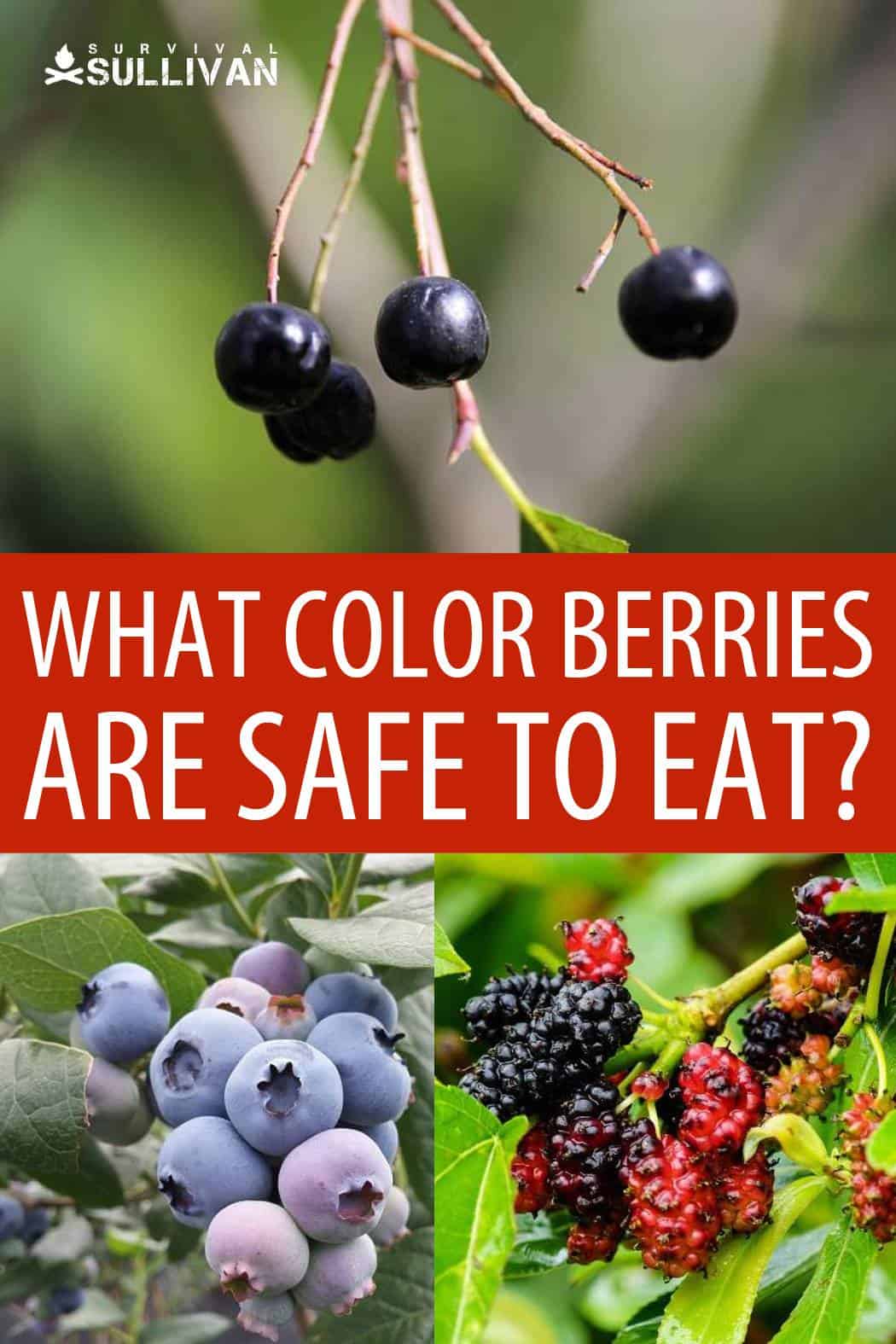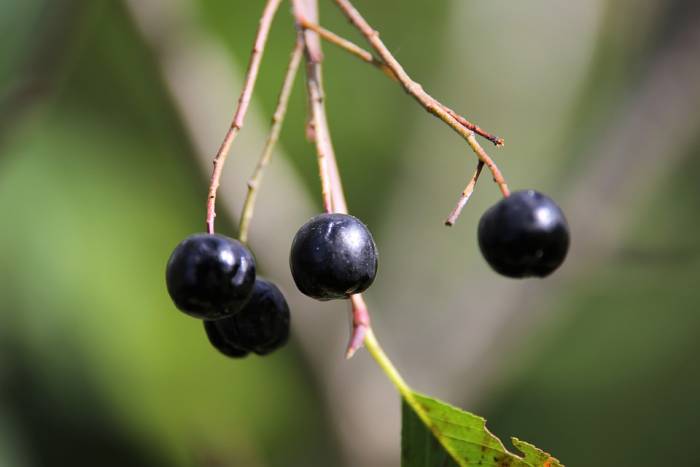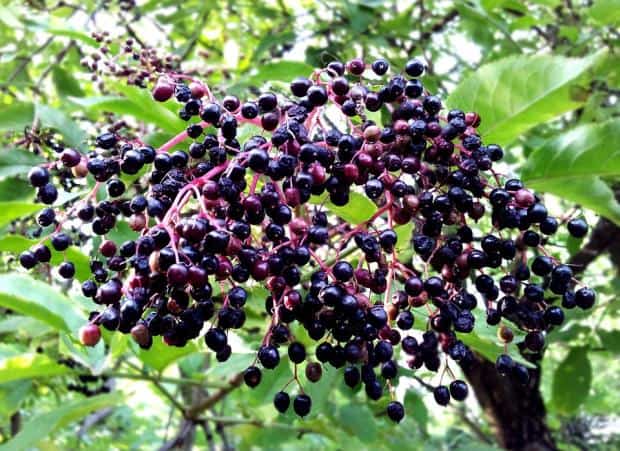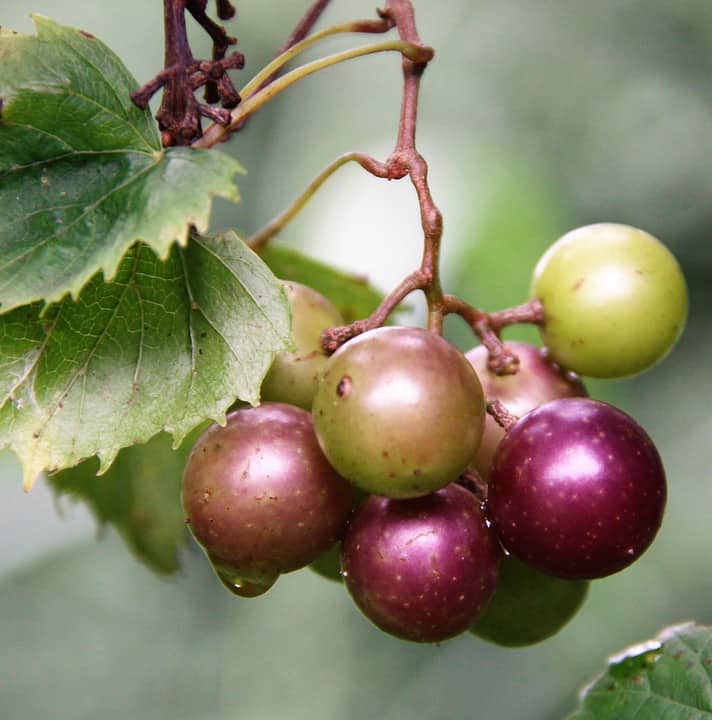
Any seasoned prepper is not going to rely on luck when it comes to keeping themselves and their loved ones fed during a survival situation.
Unfortunately, no matter how well you prepare there is always a risk that you will run out of stored food, and even if you don’t making use of found edibles out in nature is always wise. One of the most common and the most nutritious wild edibles around the world are various species of berry.
What color berries are safe to eat? Unfortunately, there is no color that is universally safe to eat, but there is no color that is universally dangerous, either. Both edible and toxic berries can be found in all common colors, including black, purple, blue, white, red and yellow. Huckleberries can be purple or nearly black and are safe, while Pokeweed berries are nearly identical with a deep purple color, but are highly dangerous.
Luckily for us, dealing with berries is a far sight simpler than rolling the dice on an unknown or potentially dangerous mushroom.
You still don’t want to be taking your chances if you don’t have to, but with just a little bit of prior study and some common sense you’ll be reliably snacking on tasty nutritious berries found growing wild in no time.
Don’t Put Unknown Berries to the Taste Test
It goes without saying that you should never risk your life or health by eating berries of unknown type. Though generally toxic berries are less harmful than poisonous mushrooms and other plant matter there are still many kinds that can make you dreadfully ill or even kill you.
Some of the worst offenders, which happen to appear quite tasty, can even inflict significant organ damage or cause your heart to lose its rhythm.
Unfortunately, the greater body of prepper lore is sometimes contaminated by well meaning but ineffective advice as to what kinds of berries are safe to eat, or at least safer to eat.
This advice typically revolves around the color of the berry and what percentage of berries typically possessed of that color are safe or toxic.
Often advice on the subject will advise readers to avoid all berries of white and yellow color because berries of that color are almost always toxic and rarely edible.
You might also read that about half of red or “ruby” colored berries are safe to eat with the other half being anywhere from mildly toxic to ferociously poisonous. And so on and so forth, with the majority of blue or blackberries being safe.
The problem is that advice of this type is just not very useful or actionable in any circumstances that can reasonably be imagined.
Under what conditions will you be so hungry, or so starved that you are willing to take a chance with an unknown type of berry based on its color alone? I am not asserting that such a scenario cannot or has not happened; just that it is unlikely you will ever be put to the test in such a way.
And even if you were, I guess it is nice knowing you should take your chances with a blue or black berry first before you try any others, but that still does not tell us very much about the risks involved.
The same could be said for red berries, as I don’t know anyone who would play those odds, and I sure as hell don’t know anybody who would risk eating a white or yellow berry if the old proverb is to be believed.
A much better and far simpler solution is to simply spend a little time getting intimately acquainted with both the edible and inedible berries that grow in your region or in any region that you regularly work or travel in.
Once you do this, you will be able to safely and easily choose from all the varieties of berries growing in your area without fear.
You Must Know What You are Dealing With
If you are planning on ingesting wild berries in any capacity, be it for survival purposes or not, you must start accumulating the knowledge and experience now in order to do so safely when you are actually in the field ready to pick some enticing berries from a wild grown plant.
Lots of edible berries look very similar to ones that are inedible, and some inedible, dangerous berries look just like delicious, nutritious ones that you should prioritize over all the others.
Comparing the berries might not be the way to go; you need to identify the berries based on the type of plant that produces them.
But let’s say you screw up, or you just roll the dice, and they both come up snake eyes. You have eaten a toxic berry. Oh no! Now what?
Well, depending on the type of berry, its ripeness and what sorts of compounds it contains, you might be facing down anything from cramping to nausea, vomiting to diarrhea, and even symptoms as severe as seizure, coma and heart arrhythmia.
Some berries contain alkaloid compounds that are so toxic they can actually inflict permanent organ damage. Yikes.
Generally there is no substitute whatsoever for expert knowledge of what kind of plant that you are dealing with.
However if you are in an unknown region or looking at an unknown plant and are truly desperate for calories or just vitamins and minerals there is a generally reliable field test that might be able to help you, or at least head off true disaster.
The Universal Field Edibility Test
Okay, for whatever reason you have got to have something to eat and the closest thing in hand is an unknown species of berry.
You don’t want to go hungry, you sure don’t want to starve, but you also don’t want to risk making a bad situation worse or even killing yourself by eating toxic berries. You have a berry bush in front of you, but you don’t know a thing about it. What do you do?
You use this simple test. Note that it is not 100% foolproof, but it is generally highly effective at alerting you to berries you should not eat prior to going whole hog and eating half a bushel. It might be too late then!
The test is slow, cautious and methodical and that’s why it works. Follow the steps below:
First, give the berries a strong sniff. Any odd odor or distinctly unpleasant odor is usually a sign that you don’t want to eat it.
Second, gently rub the berry on the skin of your inner wrist or inner elbow for a few minutes. Wait, and if you notice any burning, numbness, irritation or other malady do not eat the berries.
Third, repeat that part of the test using a little bit of juice from the berry. Observe and feel for any reaction.
Fourth, rub the berry on your lips and observe and feel for any reaction as with steps two and three. If you notice any unpleasantness do not eat the berry.
Fifth, take a tiny bite of the berry and simply hold it in your mouth for 10 to 15 minutes. If the berries start to taste bitter, coppery or like a mouthful of soap, spit them out and rinse your mouth out. Definitely do not eat those berries.
The last step, take a small bite and swallow. Wait a couple of hours or as long as you can to determine if there is any adverse reaction. After a few hours, so long as you are in good health you should be okay to eat the berries in question.
Again, this test is in no way completely foolproof as certain berries build up toxicity in your body over time, or even take more than a few hours for the effects of their toxins to register, but you should still follow this test in all cases we are considering eating an unknown berry as extreme measures.
Berries: The Good and the Bad
Berries run the gamut on the survival spectrum. Many are incredibly tasty, highly nutritious, and a reliable method of gathering extra calories anytime you are a field.
Others will kill you or just make you wish you were dead. Much of the time the two categories might look very similar, in fact two similar for comfort!
It is up to you to learn how to identify which berries are beneficial and which should be avoided. It is not always easy, but nothing beats real expertise.
In the remainder of this article we will share with you five kinds of berries you should look out for in order to supplement your rations while in the field, and five you should avoid no matter how hungry you are.
Nutritious Berries – Eat These!
✅ Chokeberries (Aronia)

Not to be confused with chokecherries which have some issues with toxicity, but may be made edible. Chokeberries, on the other hand, are tasty if a little bit tangy, and commonly found growing in swamps, wetlands and moist woodland environments.
They are endemic to the eastern part of North America and range in color from black to purple to red. They are tasty raw and also easily made into all kinds of sweet dishes and condiments.
✅ Mulberry (Morus)

Mulberries look a lot like raspberries, if larger and oftentimes less symmetrical in appearance. These clustering berries grow in subtropical, humid regions all over the globe, and are renowned for juicy sweetness and coveted for use and jellies and jams, syrups and other foods.
These are an especially good berry to locate if they grow in your region because they are packed with vitamins, potassium and magnesium, and are one of the few berries with a significant iron content.
✅ Huckleberry

If you want a tasty, nutritious and plentiful berry to dine on in a survival situation you should make huckleberries your, well, huckleberry. Huckleberries look an awful lot like blueberries, with a color that varies from purplish black to a very dark blue though some examples are red and still entirely safe to eat.
The berries themselves are usually round, firm and plump. Huckleberries are known for being tart, but if you pick them when they are completely ripe they have a pleasant, floral sweetness that offsets this. These berries are another excellent source of nutrition in the wild.
✅ Elderberry

Elderberries somewhat resemble blueberries or huckleberries in appearance, only they grow in bunches on climbing tendrils. Elderberries are another highly nutritious wild berry that you should definitely partake of, but there are a few things you need to know about them.
First, these are a decidedly tart berry, and something of an acquired taste if they are not processed into a sweeter dish. Elderberries are also mildly, mildly toxic, causing nausea when eaten raw in large quantities.
Luckily, the compound responsible for causing the nausea cannot survive high heat and so cooking them will completely neutralize it. This explains elderberry’s popularity as an ingredient in all kinds of syrups, beverages and wine.
✅ Muscadines (Vitis rotundifolia)

Muscardines are definitely one of the stranger edible berries you will run across, but you should definitely partake of them if you can find them and positively identify them.
Muscadines appear sort of like large grapes and possess a typically brownish color although they can range from this to plum and even black.
This is another wild berry that is absolutely cramped with vitamins and minerals, and it also provides fiber. Perhaps the only downside to muscadines is their somewhat strange taste, often sweet, but also possessing an odd musky note.
Toxic Berries – Avoid These!
❌ Holly berries
The holly plant is a time-honored, beautiful and traditional ornamental that is often enjoyed during the winter seasons and close to Christmas, and part of its appeal are the incredibly gorgeous, glossy red berries.
The berries are apparently too tempting to children and animals because dozens to hundreds fall ill or die every year from ingesting them.
The alluring but highly toxic berries contain all kinds of poisons that can cause a range of symptoms ranging from intestinal agony to vomiting, diarrhea and nausea. In high doses they can induce coma.
❌ Pokeweed berries
The berries of the strange looking pokeweed plant are a deep purple to black color and a favorite among birds and various other animals.
But if you are not one of these few critters that may dine safely on pokeweed berries you can expect interrupted breathing and potentially asphyxiation from respiratory paralysis if you eat them or any other part of the plant.
The roots in particular contain extremely high amounts of toxin. Avoid these at all costs.
❌ Virginia Creeper berries
The Virginia creeper is a hateful nuisance or a beautiful ornamental depending on who you ask as it grows virtually everywhere and can even unsettle foundations in its quest for moisture, so voracious is the plant.
It produces beautiful flowers and attractive black or purplish berries. Unfortunately these berries are high in oxidizing acid levels, acids that can mangle your kidneys.
Birds are the only species that can partake of these berries without harm. It only takes a couple to destroy your kidneys, so be careful.
❌ Mistletoe berries
The ethereal, white, and dangerous berries of the mistletoe plant stand at odds with its traditional place of honor at holiday celebrations.
There are many varieties of mistletoe, and these species are very wildly in toxicity though all parts of the plants are dangerous and in particular the berries.
Mistletoe poisoning results in blurry vision, seizure, vomiting, diarrhea and potentially even heart attack. Death is comparatively rare unless someone steeps tea from or adds mistletoe berries or leaves to a beverage, as the toxin is particularly liquid soluble.
❌ Yew berries
The yew tree is one with a distinguished history, equally famous for its pride of place at religious sites and cemeteries as its wood that gave birth to some of the best bows of the era.
Unfortunately every single component of this coniferous tree is poisonous and often highly so, with the one notable exception of the flesh of the olive-like berries that surround the seeds.
Nonetheless, ingesting the appetizing looking berries will still result in severe poisoning from the skin and the seed itself, and the toxins ingested act quickly and are readily absorbed making it extremely dangerous.
Parts of the yew plant maintain their toxicity even after being dried out or cooked and the tree is notorious for killing both domestic and wild animals.
Conclusion
You cannot rely on the color of a berry alone to determine its suitability for eating. Berries in all colors can prove to be both nutritious and tasty, or they could prove to be hideously poisonous, capable of making you terribly sick or even killing you outright.
Aside from performing a slow and methodical field edibility test on an unknown berry the only way to know for certain that a berry is good for eating is by positively identifying it as such.

The post So, What Color Berries Are Safe To Eat? appeared first on Survival Sullivan.
https://ift.tt/3cqMDW6
via Survival Sullivan https://ift.tt/3uoppXJ
March 28, 2021 at 08:31AM
0 Comments